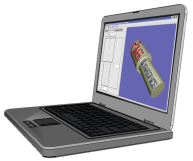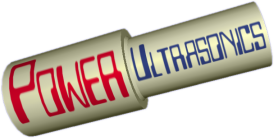A new online ultrasonics components store has just opened at www.UltrasonicsWorld.com. Check their amazing prices for replacement ultrasonics components, fully compatible with the major manufacturers' originals at a fraction of the cost.
You are here
Ultrasonic drilling
Hello Chris
I’m a Ms.C student and my Thesis is about Ultrasonic drilling.
Right now I want to make a stepped horn (Sonotrode). In the papers and
books which I have read up to now, they all say that the length of the
horn must be half of the wave length and step must be at middle of horn
(wave length/4 ) , I know there is also a correction coefficient that u must multiply with this length for calculating the exact dimension of the horn, and if the diameter of the horn in regard to the length of the wave is small we can forget this coefficient and put the step exactly at wave length/4. My teacher insists that I must simulate acoustic head with Ansys software and after that I must design horn related to Ansys results. I'm working on Ansys since 1 month ago. I must spend at least another month to simulate all acoustic head and horn. Then regarding to the results I can find out what must be the exact horn dimensions.
I wanted to know your opinion about this matter, Is it worth spending a
lot of time on simulation program to obtain horn dimension? You think
there will be so much difference between software results and the simple method? (Length wave/4)
I have another question!! I was thinking that if the drill tip contacts
the part, part and fixture will be joined to system and we will loose a
lot of power and …. I'm not sure that I'm right about this matter, but I'm sure that there must be an optimum position for drill tip (I mean drill length) that at that length the system has little loss and works better.
Are you familiar with this matter??
Best regards
Bahman


Re: Ultrasonic drilling
Hi Bahman,
For a simple stepped horn design I would tend to agree with you that FEA is unnecessary, but I think there are three other things to consider here:
1. Your teacher may feel that using Ansys to verify the design is important as a way of training you to handle more complex designs (where simple wavelength / 4 will not work) or simply as a way to give you real experience using FEA software.
2. When you start to consider the effect of the drill on the horn you may find that the design isn't so simple after all:
Will the drill be another tuned length? If so then it shouldn't affect the resonant frequency of the horn. If not (a more likely scenario) then it will act like a dead weight on the end of the horn, changing the resonant frequency. But by how much? As a rough guide you might want to shorten the horn tip so as to remove mass equal to that of the drill but I wouldn't rely on that being accurate in all situations.
A good Ansys model would allow you to add the drill and see the results for yourself.
3. Finally, and perhaps most important, I'm guessing a fairly standard drill with a relatively small diameter compared to its length. Quite apart from its effect on the horn resonance a drill like this may have several interesting resonances of its own - mainly bending modes that would be very hard to predict accurately without FEA.
If one of these resonances appears close to the frequency you're using then you can expect some interesting effects (I'm imagining very little drilling and lots of broken drills!).
Anyway, best of luck with your project, whichever way you decide to go - it's good to see students working in this field and asking good specific questions. If you have more feel free to ask again, or just come back and give us a progress report.
Regards
Chris